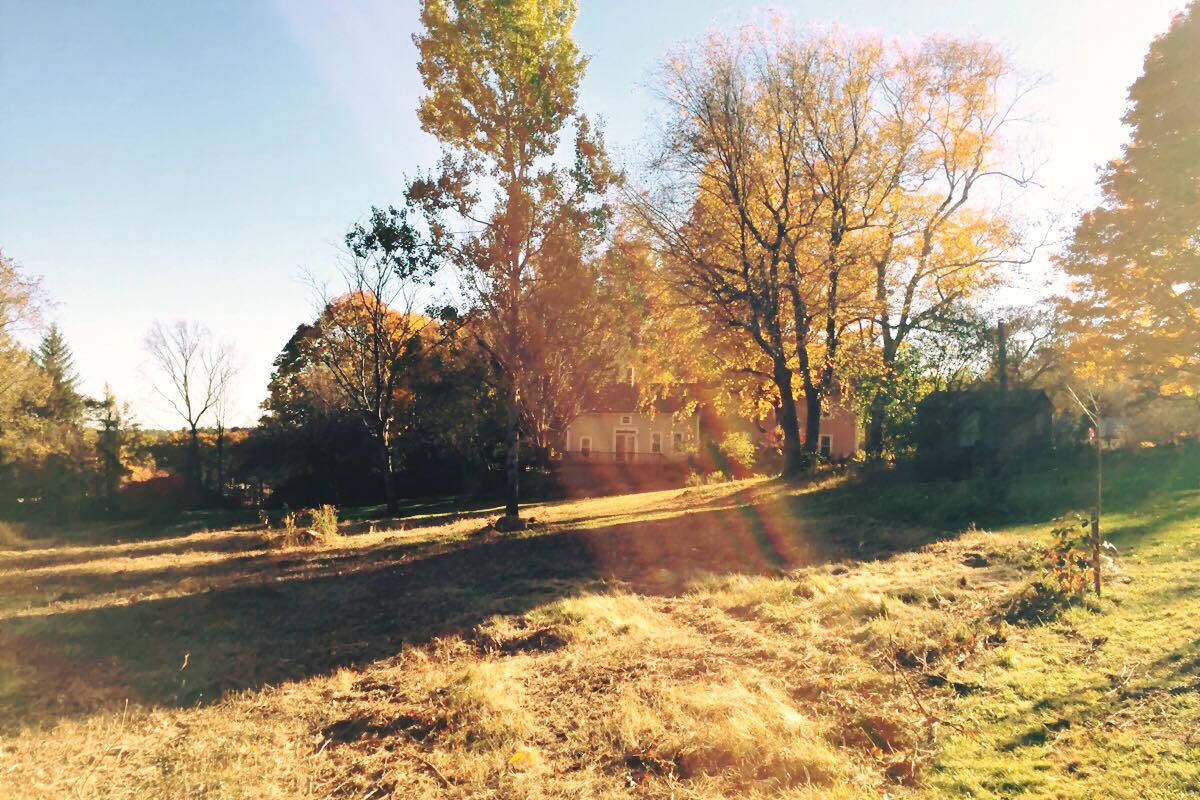
View of the farmhouse from the field, freshly shorn of summer growth.
At the end of the summer and early into fall, usually in late October, the field will be knocked down and all vegetation cleared away. The cycle comes full circle, as the wildflowers run their course and birds start to migrate away. I love the way the seasons change the landscape, each in a unique way.

Afternoon light at the farm.
Yet, it’s when the land has been clipped, like sheep of their wool, that the acreage that extends from the stone wall to the house can be truly appreciated.
Remnants of a collective agricultural past take the form of harvest & daylight saving time, and the farm makes that past all the more vivid to me. There’s something austere in New England’s beauty, stoic and staid, causing Emersonian self-reliance. There’s pride that comes from survival, & a certain kind of beauty.

View of the field.
Maybe that’s why writers who capture the perils of surviving a landscape carry so much appeal? From Edith Wharton & Willa Cather, to Jack London & Jonathan Krakauer, stories of the individual struggling in a distinctly American landscape have shaped our cultural history.
We owe our land, our identity, to those bold individuals who dared to venture out, away from what they knew as their home, to make a new life in a new land.
“We invest far off places with a certain romance… Long summers, mild winters, rich harvests, plentiful game; none of them lasts for ever. Your own life, or your bands, or even your species – might be owed to a restless few, drawn by a craving they can hardly articulate or understand, to undiscovered lands, and new worlds.” – Carl Sagan

View of the farm & field at dusk.

Wow it looks like from a movie.. beautiful
Gosh, that’s so nice of you! One of my favorite things to do is take pictures of the farm and grounds. I really appreciate your reading and leaving a comment!
You’re welcome😁 keep on taking pictures and write the good posts❤️
This looks like a spectacular and peaceful place.
You’re so kind!! Thank you for reading and the lovely comment!
Beautiful photos